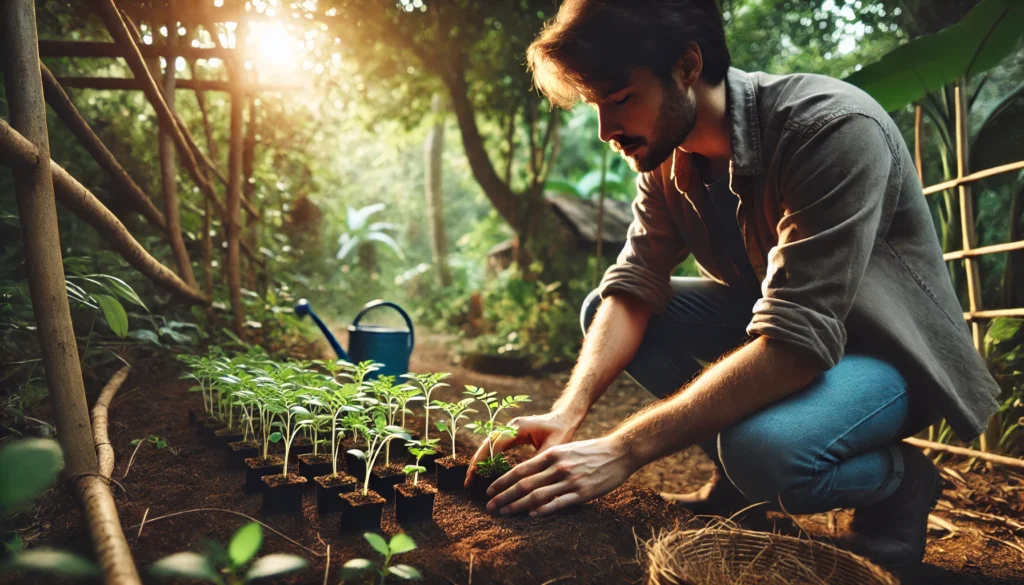
How to Harden Off Propagated Seedlings: A Complete Step-by-Step Guide
Bringing your carefully propagated seedlings from the safety of indoors to the unpredictability of the outside world can feel nerve-wracking—but it’s a crucial step for strong, healthy plants. Without proper acclimation, young seedlings can suffer shock, stunted growth, or even die. That’s why learning how to harden off propagated seedlings is essential for any gardener hoping for a successful transplant. In this step-by-step guide, you’ll discover exactly how to transition your tender plants to outdoor life with confidence and care.
Table of Contents
ToggleWhat Does “Hardening Off” Mean? 
“Hardening off” is the process of gradually introducing indoor-grown plants to outdoor conditions. This essential step helps prevent transplant shock, sunburn, and stress caused by sudden exposure to wind, sunlight, and temperature swings 
When seedlings or young plants are started indoors, they live in a stable, cozy environment—no wind, no harsh sun, and consistent warmth. But the outdoors is different. If you move them outside too quickly, their tender leaves and stems can get damaged, or worse, the plant may die. That’s where hardening off comes in.
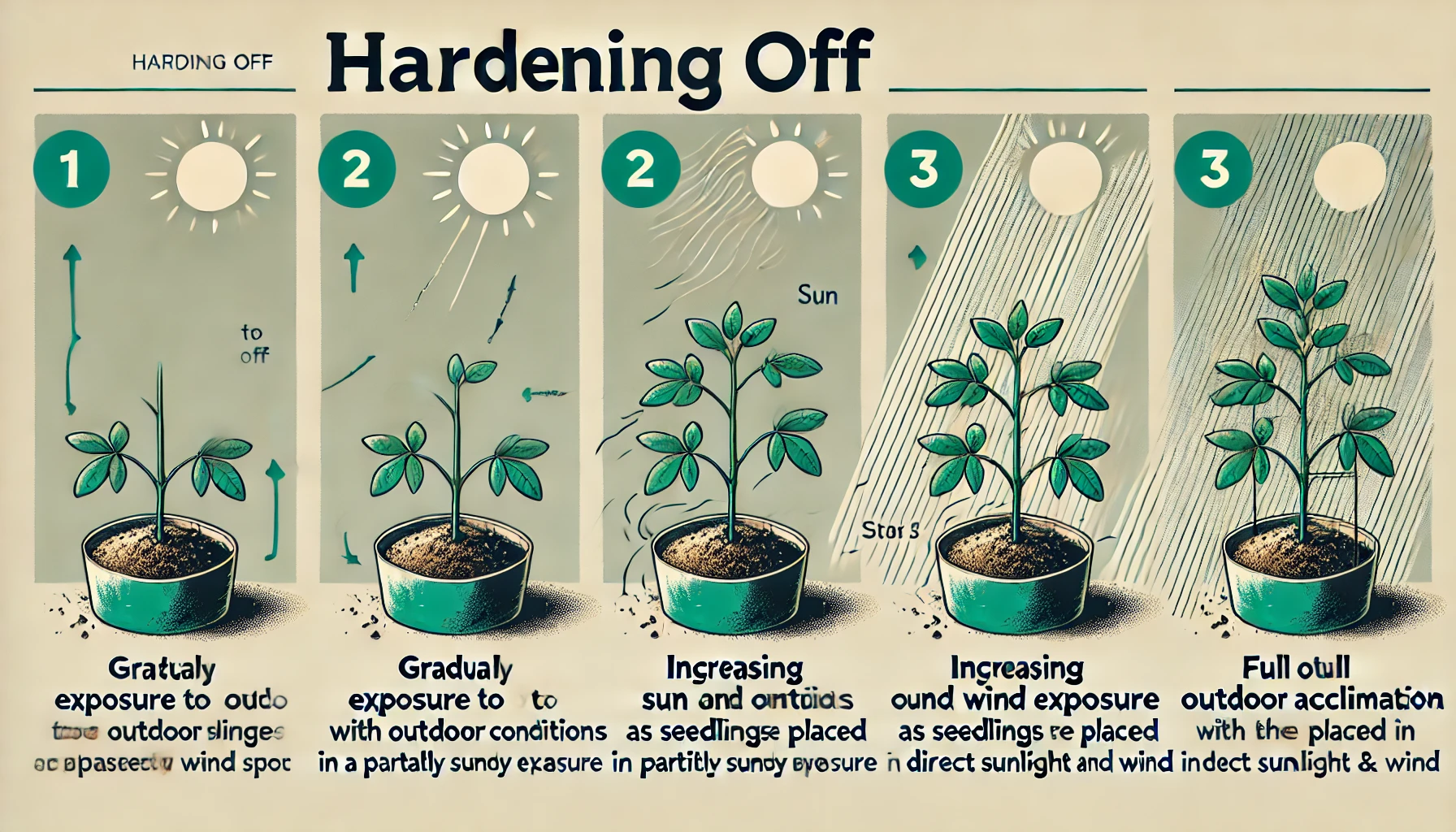
Think of it as “training” your plants for the outside world 
Why it matters:
Reduces transplant shock
Prepares plants for wind and weather
Prevents leaf scorch from sudden sunlight
Encourages stronger, more resilient growth
In short, hardening off is a simple yet powerful step that sets your garden up for success. It ensures your plants are ready, tough, and healthy before making the big move outside.
Would you like a printable hardening-off schedule or checklist?
When to Start Hardening Off 
Timing is everything when it comes to hardening off your plants! 
Here’s how to know it’s the right time:
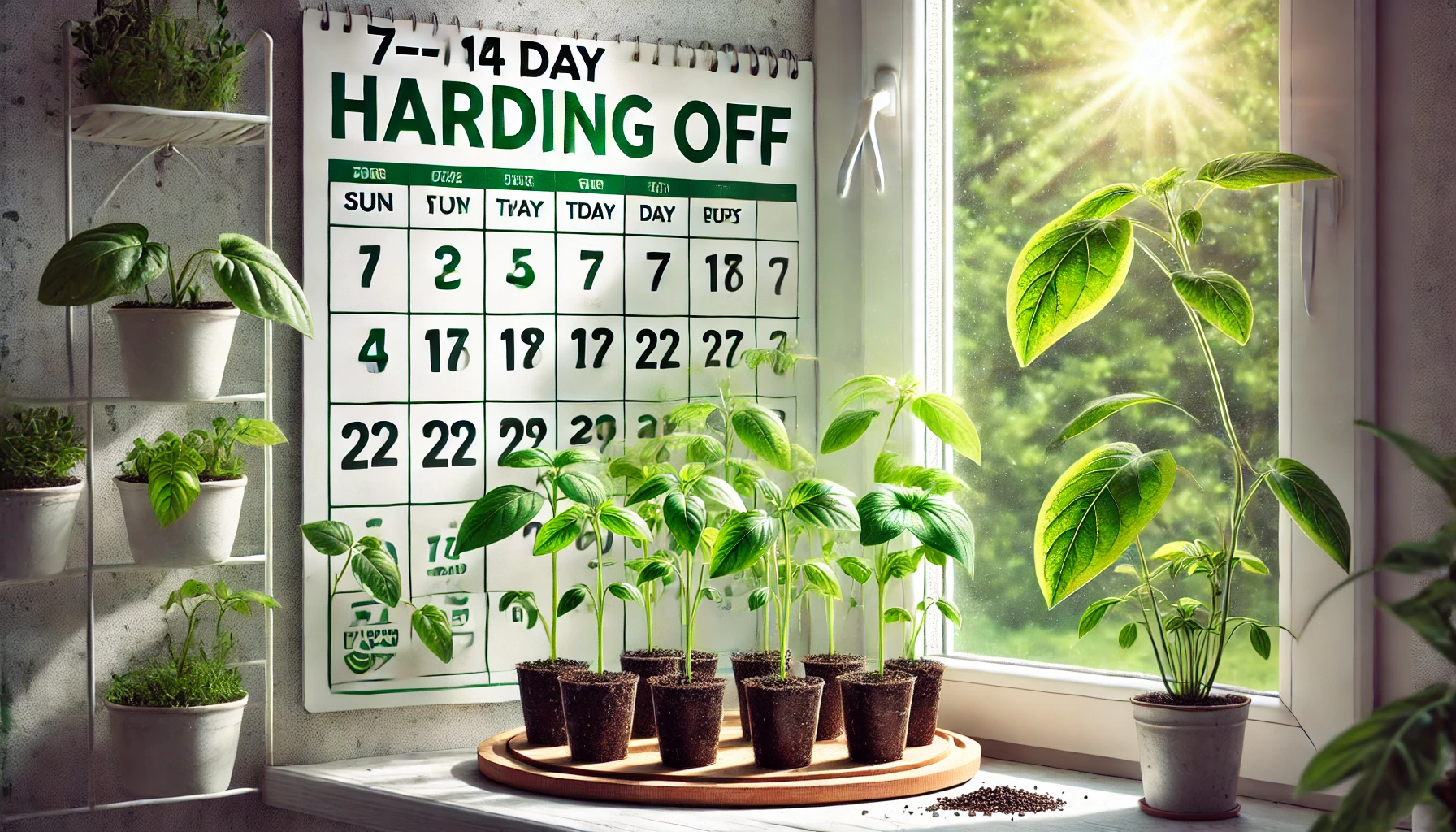

Wait until the last expected frost date has passed. Tender seedlings can’t handle sudden cold!

Make sure outdoor temperatures are consistently mild during the day. Warm, stable weather helps plants adjust safely.

Only start hardening off when your plants have strong stems, at least 2–3 sets of true leaves, and look vibrant.

Begin on an overcast day or late afternoon to reduce sun stress. Bright sun can shock indoor-grown seedlings.

Start slowly—just 1–2 hours outdoors the first day—and gradually increase time and exposure to sunlight and wind each day.
Being patient with hardening off ensures your plants won’t wilt or struggle when they hit the garden soil.
Would you like a printable schedule or checklist for the hardening-off process?
What You’ll Need Before You Begin 
Before you jump into the project, it’s essential to gather a few tools and supplies. Having everything ready will save time and help you avoid mid-task frustration. Here’s what you’ll need:
- Healthy Plant or Seeds
Choose strong, disease-free plants or fresh seeds suitable for your climate and location. - Gardening Gloves
Protect your hands from dirt, thorns, or pests while working in the soil.

Basic garden tools like a trowel, pruning shears, or a hand rake are must-haves.
- Quality Soil or Potting Mix
Ensure you have well-draining, nutrient-rich soil. A mix that suits your specific plant needs is key.
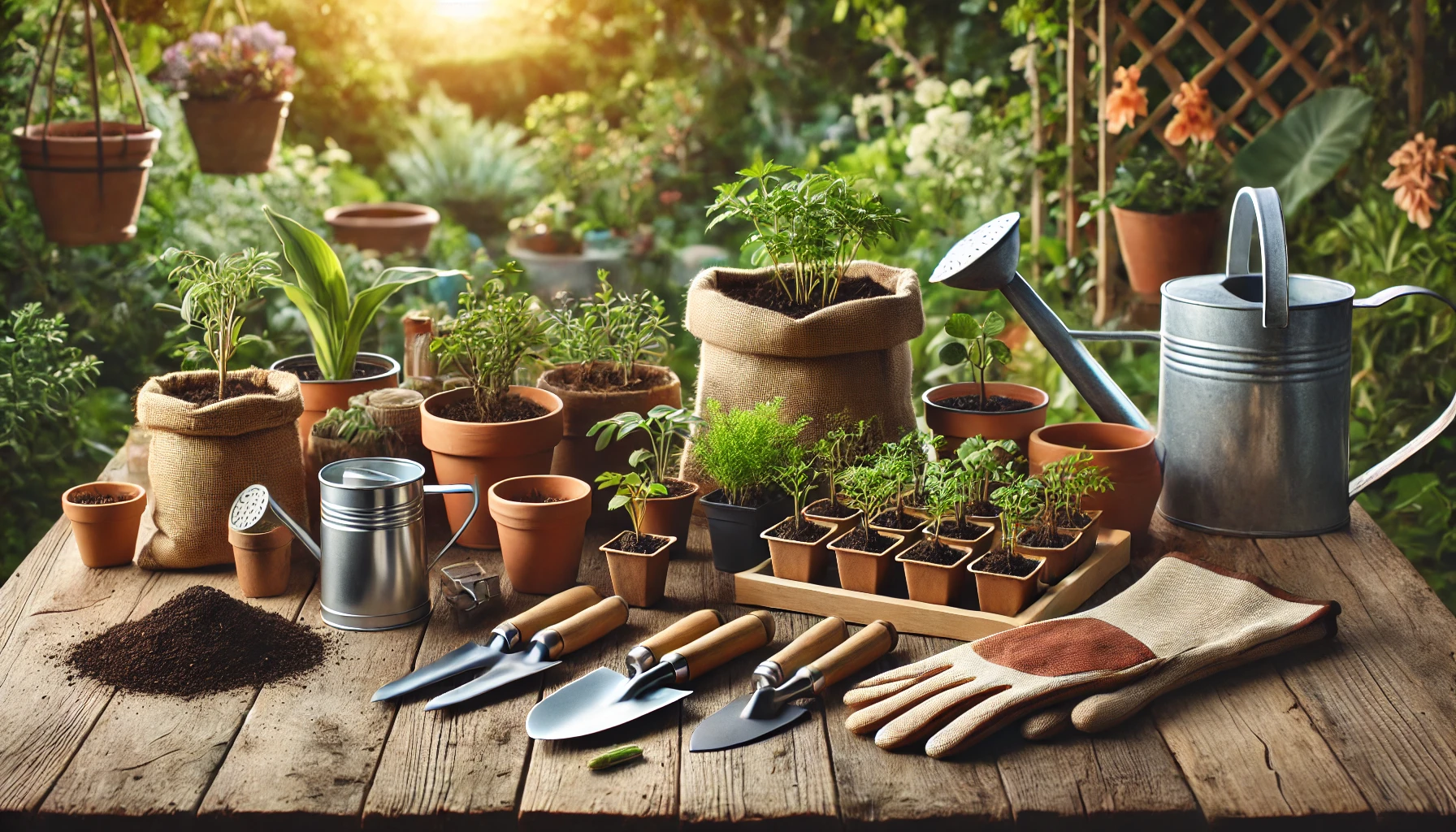

Make sure you have a gentle watering method to avoid damaging tender roots or seedlings.

Ensure your planting area gets the right amount of sunlight—full sun, partial shade, or full shade—depending on the plant.

A balanced, slow-release fertilizer can boost growth and health, especially in poor soils.

Sketch out your planting layout, spacing, and position—especially if you’re working in a garden bed or using a planting tower.
With these essentials on hand, you’re ready to start strong and set your plants up for success!
Would you like a printable checklist version of this section?
Step-by-Step Hardening Off Schedule (7–10 Days)
Hardening off seedlings is the key step before transplanting them outdoors. Without it, tender plants can suffer sunburn, wind damage, or transplant shock. Follow this easy 7–10 day hardening off schedule for strong, garden-ready plants 
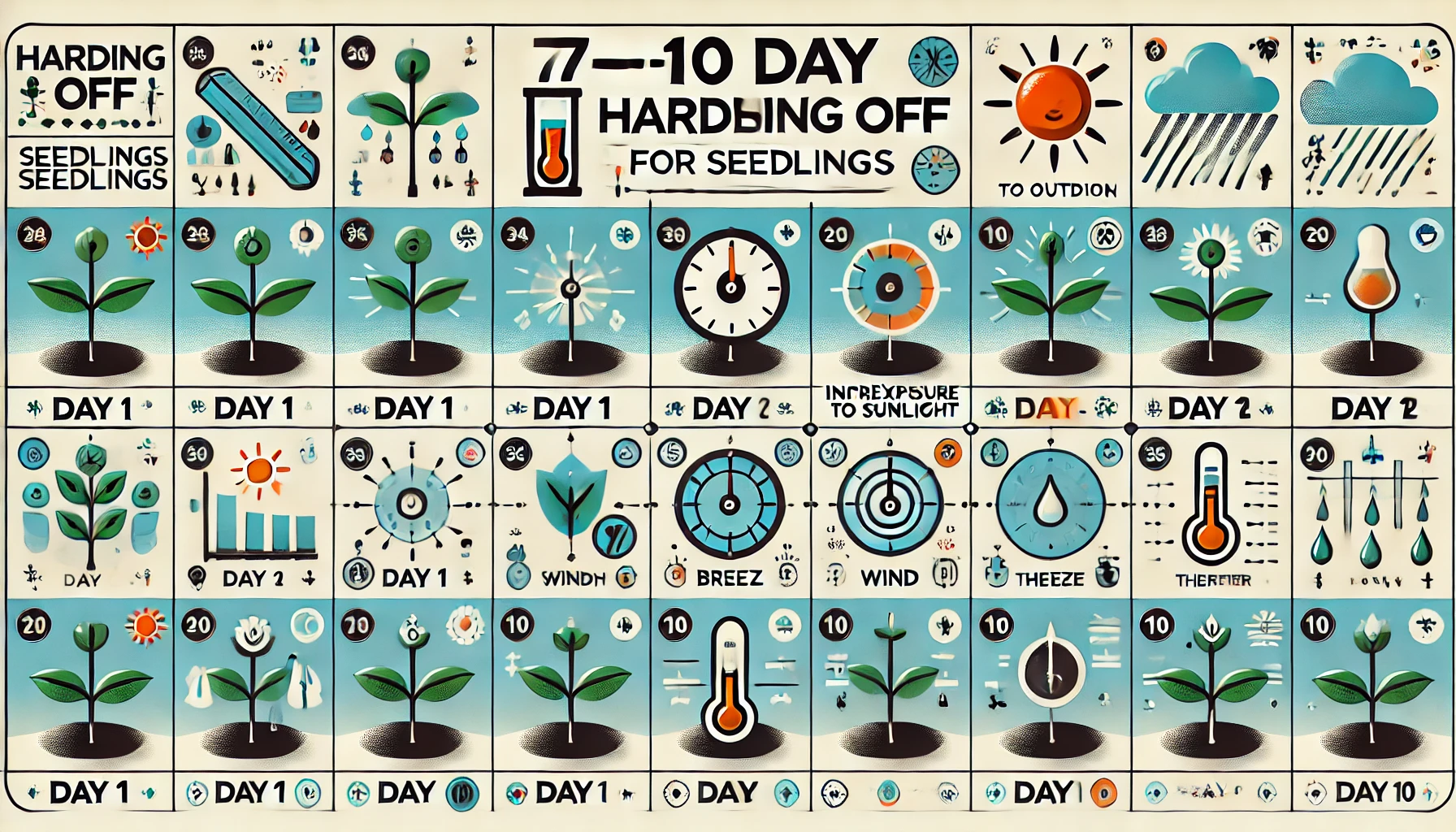
 Day 1–2: Short Outdoor Visits
Day 1–2: Short Outdoor Visits
- Place seedlings outside in a sheltered, shady spot for 1–2 hours.
- Avoid wind and full sun.
- Bring them back indoors after time is up.

 Day 3–4: Increase Time & Light
Day 3–4: Increase Time & Light
- Extend outdoor time to 3–4 hours.
- Gradually expose plants to dappled sunlight.
- Avoid strong winds and intense afternoon sun.

 Day 5–6: Introduce Full Sun
Day 5–6: Introduce Full Sun
- Place seedlings in direct sunlight for 4–5 hours.
- Water if soil starts drying out.
- Continue bringing them indoors at night.

 Day 7–8: Longer Sun & Wind Exposure
Day 7–8: Longer Sun & Wind Exposure
- Leave plants outside for 6–8 hours.
- Include a little breeze exposure to strengthen stems.
- Shade them if temps spike suddenly.

 Day 9–10: Overnight Trial
Day 9–10: Overnight Trial
- Leave plants outside overnight (if temps stay above 50°F/10°C).
- They should now tolerate full sun, light wind, and outdoor temps.


Common Mistakes to Avoid 
Even with the best intentions, small errors can hinder your plant’s growth. Here are key mistakes to avoid:

Many plants suffer from “too much love.” Excess water leads to root rot. Always check the soil moisture before watering.
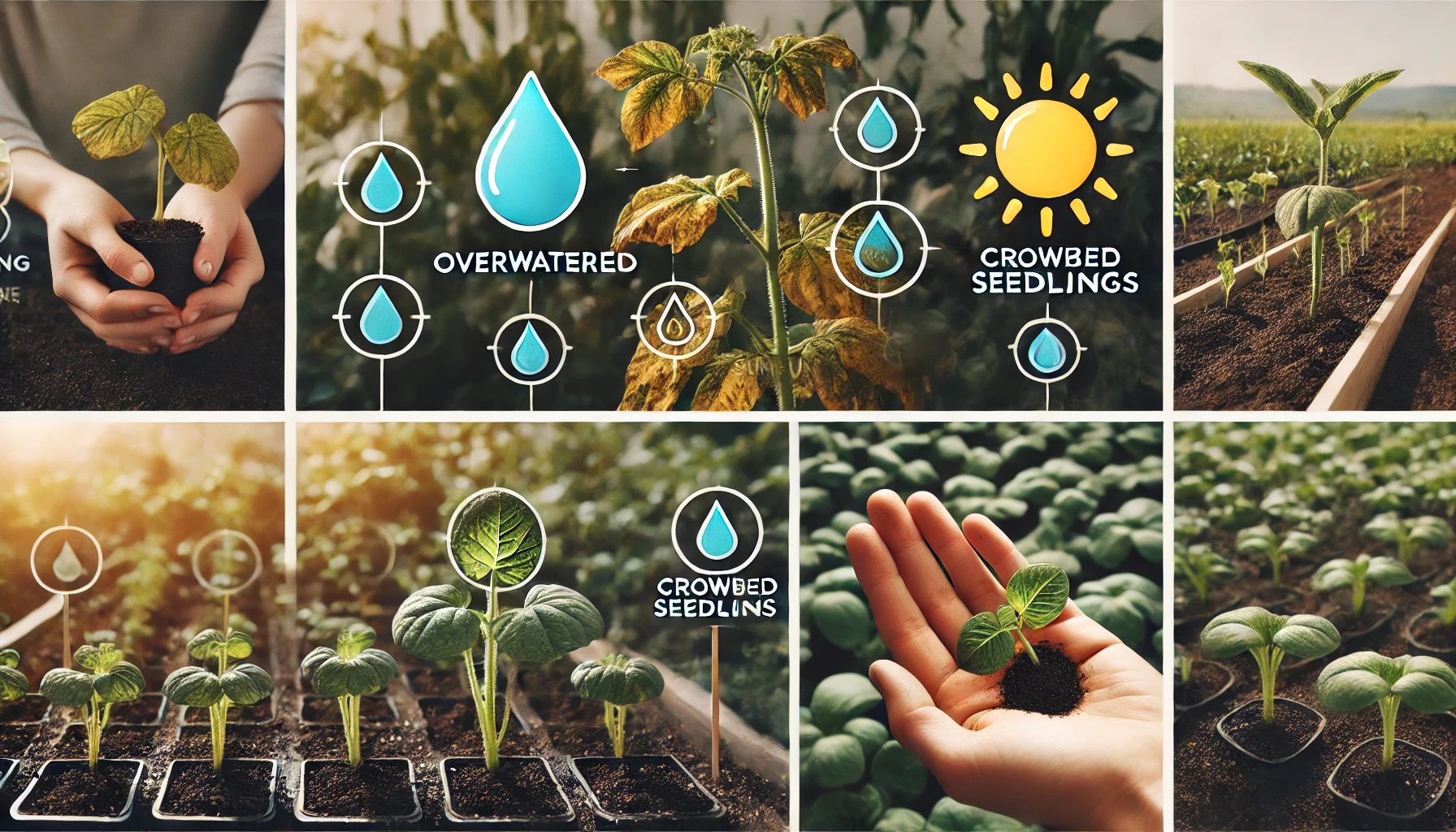

Placing a sun-loving plant in shade (or vice versa) causes stress and poor growth. Know your plant’s sunlight needs and position it accordingly.

Using the wrong soil can block nutrients and stunt growth. Use well-draining, nutrient-rich soil suited for your specific plant.

Letting dead or diseased parts stay on the plant can attract pests and disease. Regular pruning helps keep your plant healthy and tidy.

Sudden temperature changes or drafts can shock your plant. Keep it in a stable environment within its ideal temperature range.
Crowded Planting
Planting too closely limits airflow and invites fungus. Give your plants enough space to breathe and grow.

Cold water can shock roots. Always use room-temperature water to avoid stress.

Early signs of infestation (like spots or holes) should never be ignored. Treat pests promptly with safe solutions.

More fertilizer doesn’t mean faster growth. It can burn the roots. Follow the recommended feeding schedule carefully.

Skipping watering or forgetting regular checks can lead to weak plants. Create a simple care routine and stick to it.

Would you like a graphic checklist version of this section?
How to Know Your Seedlings Are Ready for Planting
Knowing the perfect time to transplant your seedlings is key to a healthy, thriving garden 

Seedlings first sprout “cotyledons” (baby leaves). Wait until they grow 2–3 sets of “true leaves” — the second type of leaves that look like the mature plant 
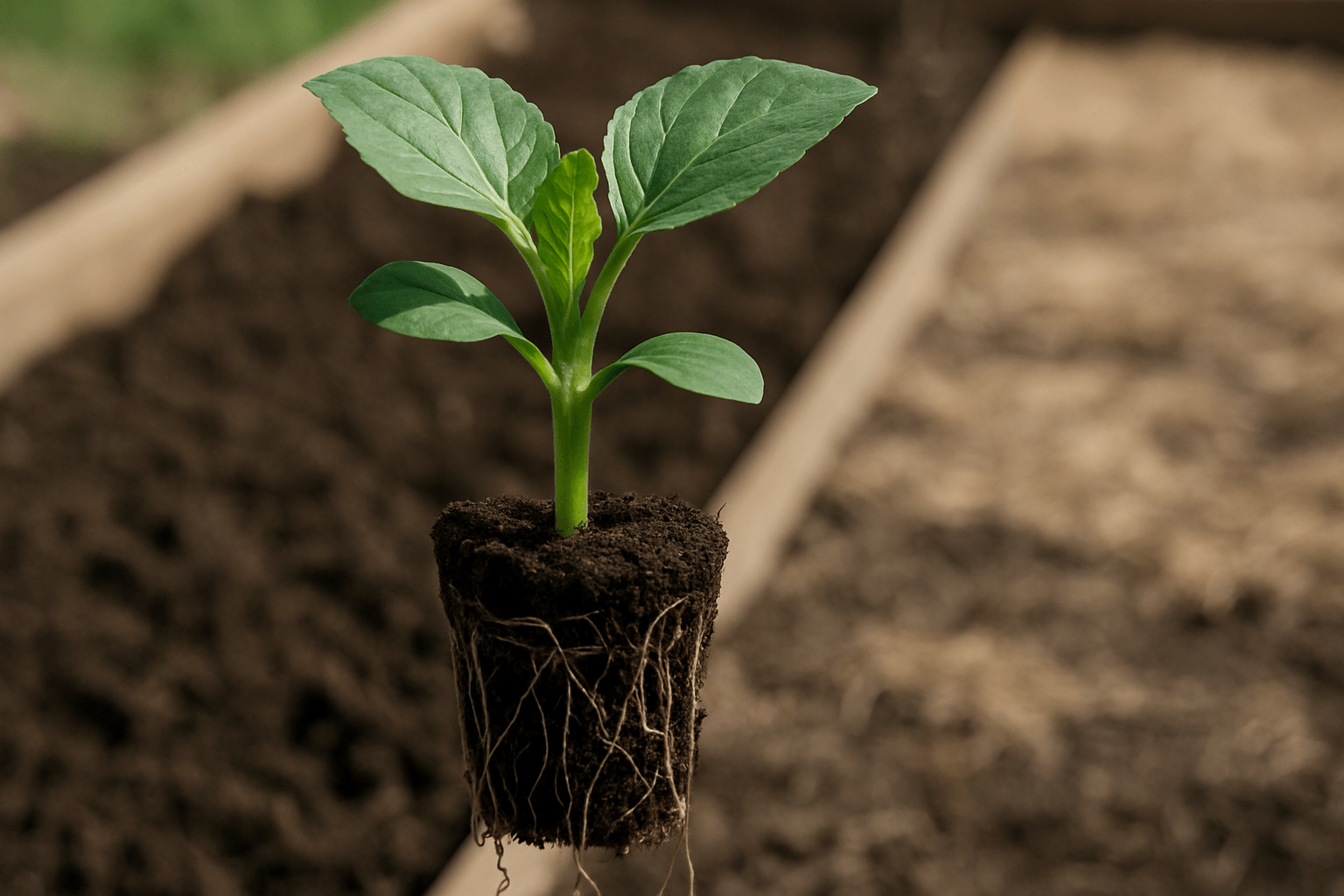

Wobbly, thin stems can’t handle outdoor conditions. Look for sturdy stems that hold the plant upright without support 

Gently lift a seedling from its tray. If the roots are white, well-branched, and hold the soil together, it’s ready for planting 

Seedlings need to adjust to the outdoor world. Gradually expose them to sunlight, wind, and outdoor temps over 7–10 days 

Wait for the danger of frost to pass 

Healthy seedlings are not too tall or leggy. They should look compact, with bright green leaves and no signs of disease or yellowing 

Pro Tips for a Smooth Transition 

Making the move seamless requires a bit of strategy. Here are expert tips to help your transition succeed with minimal stress:

Early spring or fall is ideal. Mild weather reduces transplant shock and supports healthy root growth.

Loosen the soil, enrich with compost, and ensure proper drainage. This gives roots a welcoming home.
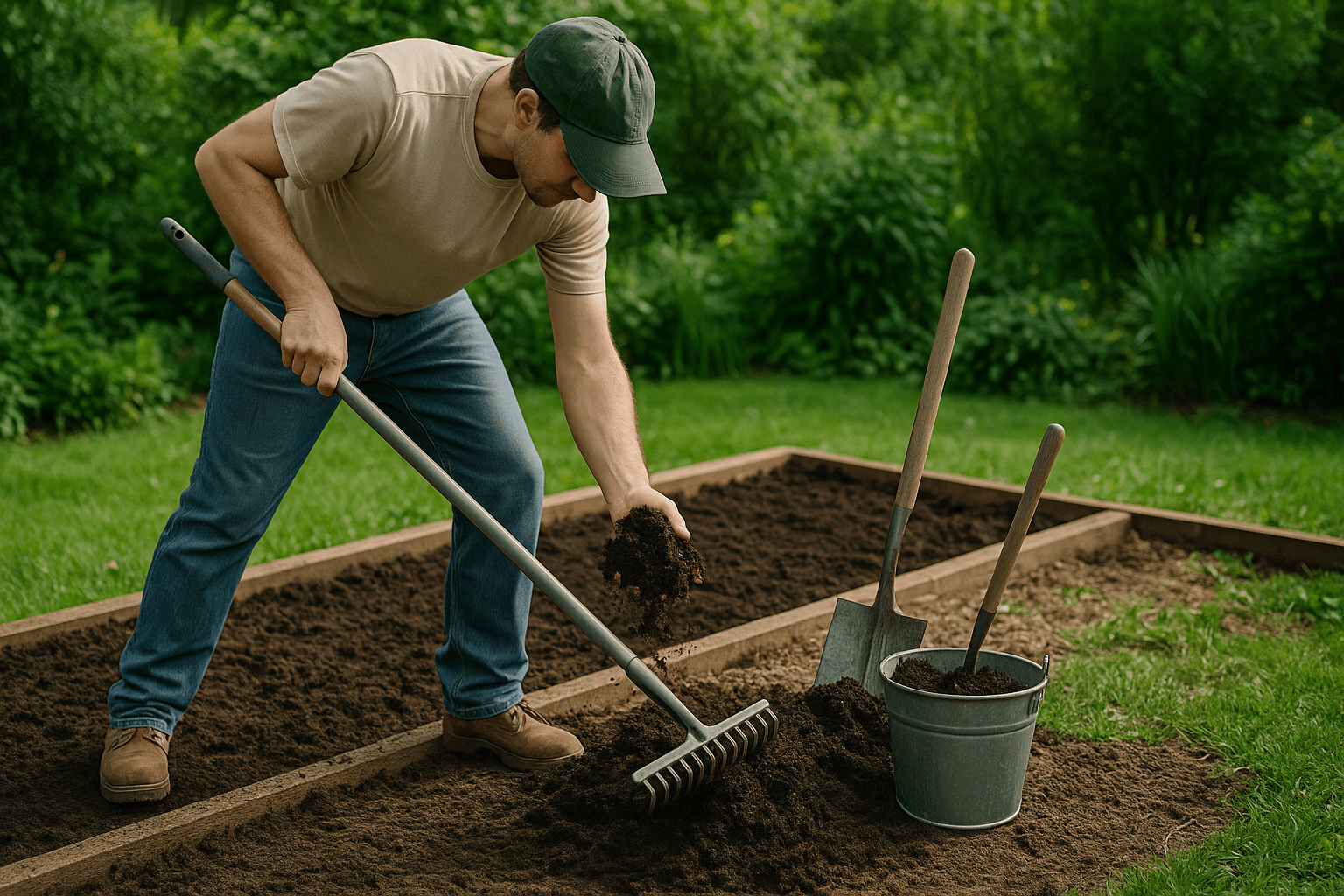

Water deeply a day before moving and again after planting. Moist soil supports easier root adjustment.

Trim dead or overly long branches. This reduces stress and lets the plant focus on root recovery.

Use shade cloth or mulch to shield against sunburn, wind, or sudden temperature swings.
Add Root Stimulator
A dose of root hormone or seaweed extract encourages faster root development.

Hold off on heavy fertilizing until the plant is established—usually 3–4 weeks post-transplant.

Keep an eye on leaves and moisture. Catching stress signs early helps avoid setbacks.

If unsure about the final location, use a container temporarily to reduce repeated shock.

Even healthy plants take time to settle. Allow 2–4 weeks before expecting visible growth.
These practical steps help ensure your plant thrives in its new home
 Connecting with Your Plants During the Process
Connecting with Your Plants During the Process
Building a bond with your plants isn’t just rewarding—it boosts their growth and your gardening success! 

Check your plants each day. Look for changes in color, new leaves, droopy stems, or pests. Observing helps you catch issues early and learn what your plant loves. It’s like learning their “body language.”
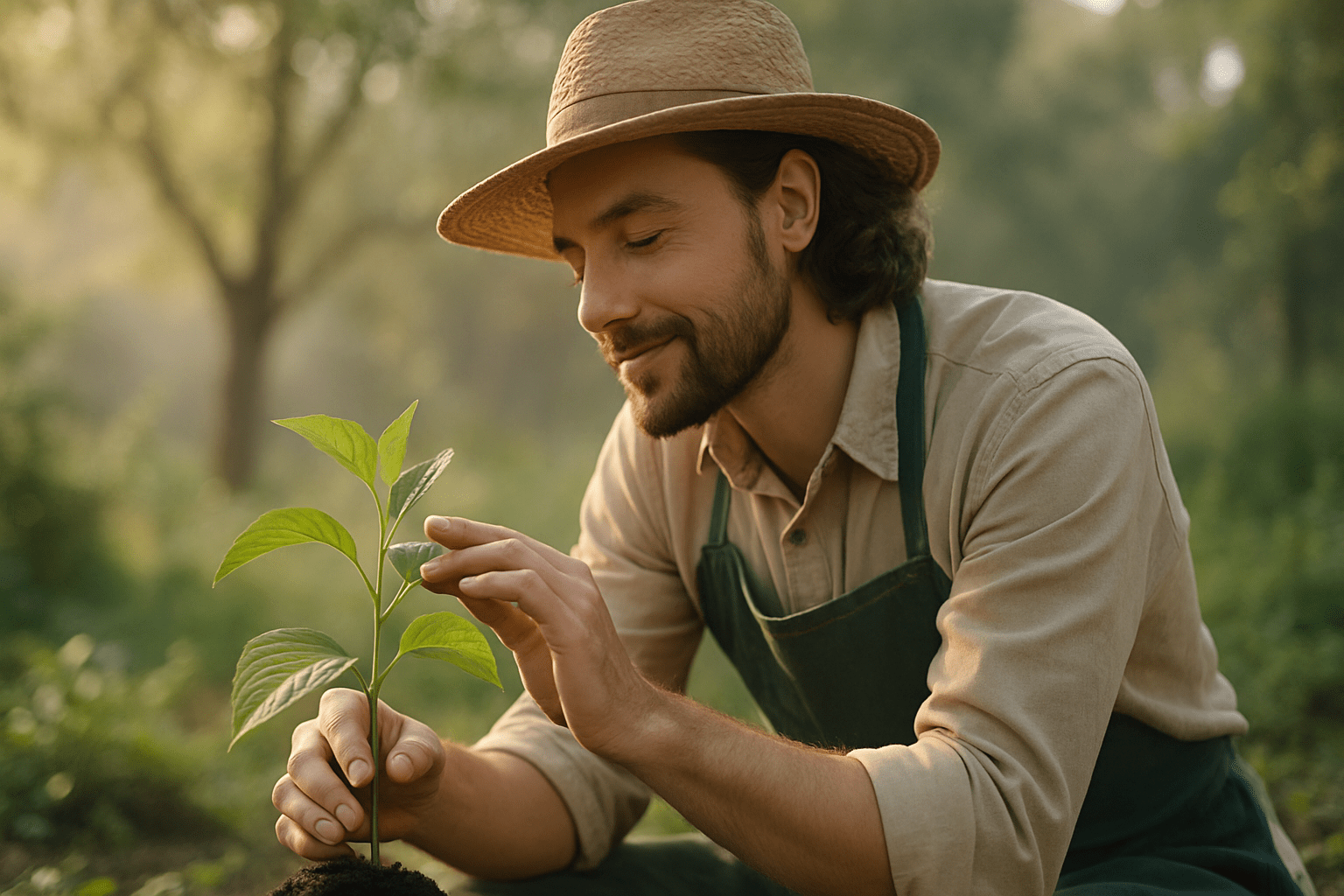

It may sound silly, but speaking to your plants or playing calm music creates a nurturing environment. Studies show that vibration (even from sound) can stimulate growth!

Gently touching or brushing leaves can help plants grow stronger and simulate natural wind. Be gentle, especially with young or delicate varieties.

Record growth, watering, fertilizing, and changes. This not only improves care but builds a deeper understanding and connection.

Watering isn’t just a chore—it’s a ritual. Feel the soil. Check moisture with your finger. Plants appreciate consistent, attentive care.
Practice Mindful Gardening
Use gardening time to slow down and be present. Breathe deeply. Feel the soil, smell the leaves. Gardening can be a form of peaceful meditation.

New leaf? First bloom? Celebrate it! Acknowledge the little victories of your plant’s journey. It creates joy and deepens your care routine.
By tuning into your plants’ needs with love and attention, you become more than a gardener—you become a plant partner.
Would you like a printable plant care tracker to go along with this section?
Final Thought
Successfully hardening off your propagated seedlings is the key to giving them the best start in their new outdoor home. By following the gradual acclimation process outlined in this guide, you’ll help your young plants avoid shock and thrive in their new environment. Remember, patience is essential—taking the time to carefully harden off your seedlings will pay off with healthier, stronger plants that are ready to grow and flourish.
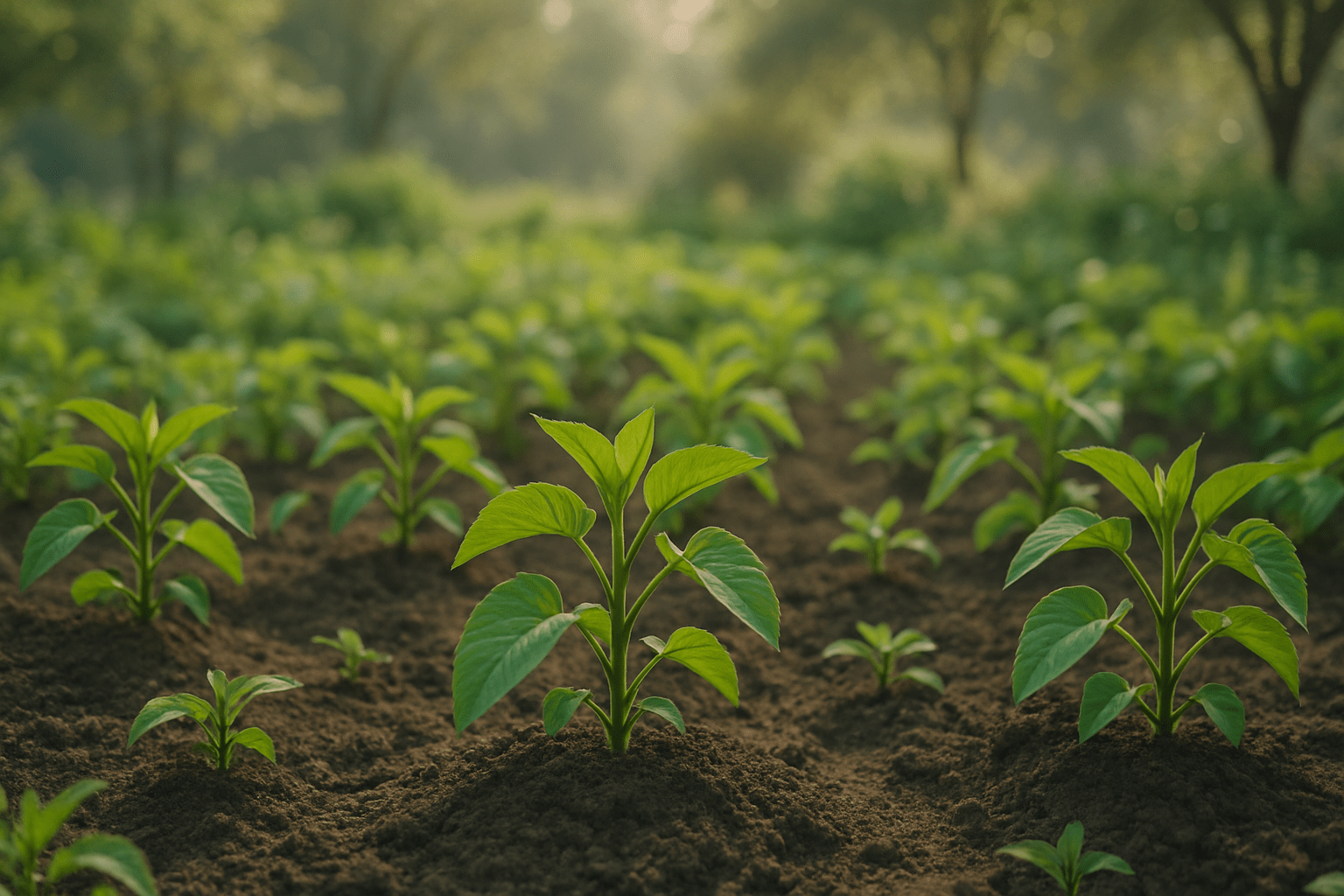
By connecting with your plants throughout this process, you’ll not only be helping them thrive but also building a stronger bond with your garden. Whether you’re new to gardening or have years of experience, hardening off is a rewarding step that will set you up for gardening success. Happy planting!
What does "hardening off" mean for propagated seedlings?
Hardening off refers to the process of gradually acclimatizing your propagated seedlings to outdoor conditions. This includes slowly increasing their exposure to sunlight, wind, and fluctuating temperatures to help them transition from the controlled environment of a greenhouse or indoors to their new outdoor home.
Why is it important to harden off propagated seedlings?
Without proper hardening off, seedlings may experience transplant shock, leading to wilting, stunted growth, or even death. This gradual process helps strengthen the plants, making them more resilient to environmental stressors like wind and direct sunlight.
When should I start hardening off my propagated seedlings?
Begin hardening off seedlings about 7-10 days before you plan to transplant them outdoors. Start with short periods (1-2 hours) in a shaded area, and gradually increase exposure to direct sunlight and outdoor conditions.
How long should I harden off seedlings?
The hardening-off process usually takes about 7-10 days. Begin with a few hours outdoors and gradually extend the time each day. Be sure to bring the seedlings back inside if temperatures are too extreme or if there’s a risk of frost.
What are the signs that my seedlings are ready to be planted outside?
Your seedlings are ready to be transplanted once they can tolerate a full day outdoors, including exposure to direct sunlight and wind. They should appear sturdy, with no signs of wilting or stress, and their growth should be steady.
Can I skip hardening off if I’m planting seedlings in containers?
Even if you’re planting seedlings in containers, hardening them off is crucial. The transition from a controlled indoor environment to the outdoors can still shock the seedlings, leading to poor growth or death. Gradual exposure helps them adapt properly.
Can I harden off seedlings in extreme weather conditions?
Avoid hardening off seedlings in extreme heat, cold, or windy conditions, as it can stress the plants. If temperatures are too high or too low, wait for more suitable weather before continuing the process. On cooler days, increase the length of time in the shade rather than full sunlight.
How does hardening off prevent cutting rot?
Hardening off helps prevent cutting rot by ensuring seedlings are strong and able to handle environmental changes. It also reduces the risk of excessive moisture around the roots, which is a common cause of rot.










